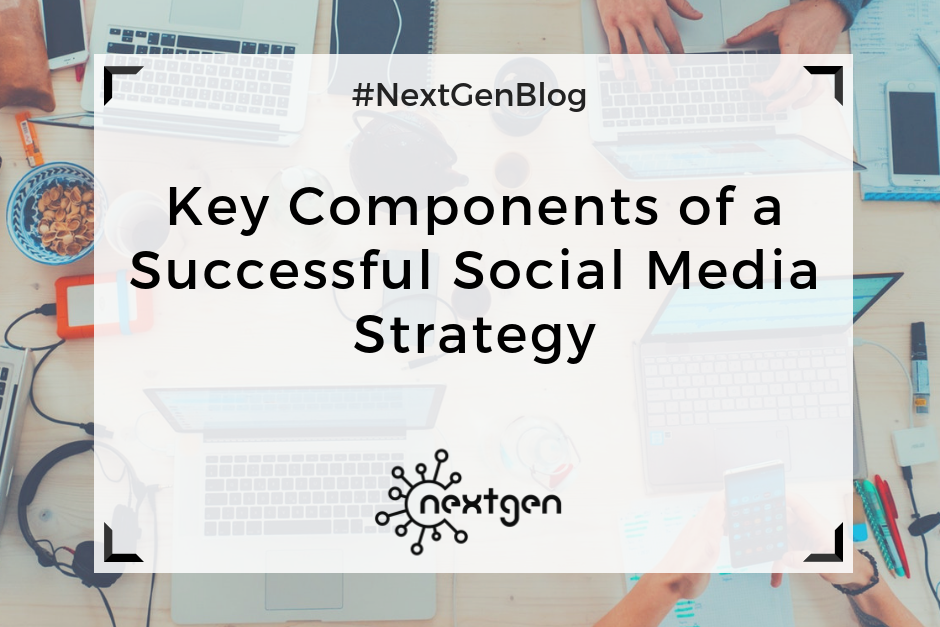
Key Components of a Successful Social Media Strategy
Every business needs a solid marketing strategy to ensure that they’re meeting the needs of current and potential customers to the best of the company’s ability. In today’s digital world, utilizing social media platforms and creating a social media strategy is an important element of this overall marketing strategy. According to HostingFacts, there will be an estimated 2.62 billion social media users in 2018. Social media is one of the most powerful (and FREE) marketing tools for your business, so you need a strategy to use this tool effectively. Here are the key components of a successful social media strategy.
#1 Identify Ideal Customers
Your social media posts should speak to a specific audience, which should also be your ideal customers. Creating or using your existing buyer personas will help you define and target the right people in the right places at the right times with the right messages. This will also help you choose the right social media platforms as part of your strategy later on. To create a buyer persona, you need to identify your ideal customers’ demographics, interests, problems, likes, dislikes, and motivations. Then you can create posts that best appeal to them.
#2 Set Goals and Objectives
The point of your marketing strategy is to accomplish business goals. You cannot move forward without knowing what you are working toward. The best way to do this is to look at your business’s needs and identify what you want to achieve with your strategy. Then, decide how you want to use social media to achieve these objectives. However, do not try to tackle all of your objectives at once through social media or else the messages will be confusing for followers. Focus on one goal at a time and switch when necessary.
#3 Choose Your Platforms
Most social media users have accounts on multiple platforms, but not every platform is right for your business. To effectively reach your audience, you will want to utilize more than one network, but do not attempt to engage customers on all networks or you will spread yourself too thin. The goal is to stay active on the platform you do use. Each platform caters to specific kinds of content and draws different demographic groups. To avoid wasting time and effort on the wrong platform, use your buyer personas to choose the right platform. Another helpful exercise might be to create a customer survey to find out what social media sites your clients actively use.
#4 Create Content Plan
Catching the attention of your audience requires great content. There are three main components to consider when creating a content plan: type of content, time of posting, and frequency of posting. All three of these components are heavily impacted by your platform, and each social media site has a unique “sweet spot” for each. All content online is generally the most successful when it is visual, emotional, and useful. This can be used as a guideline when deciding what kinds of content to create.
#5 Assigning Team Roles
The first step of deciding how to implement this strategy is deciding whether your internal staff will head your social media strategy, you will outsource the work, or have a combination of the two. Having a clear understanding of who is responsible for what will increase productivity and prevent confusion or overlapping efforts. Your strategy should assign all of the necessary roles and outline the exact responsibilities and expectations of each role. There are many tools available online to help your team develop content on their own, track the analytics of your social accounts, and manage/assign tasks to your team.
#6 Decide on Budget
Social media can be a completely free resource for your marketing needs, but there are also ways to spend money on any budget to increase effectiveness. There are also other expenses to consider such as social media monitoring and content creation. Will you need a graphic designer? Will you need video production? Do you plan on buying ads? Make a list of the tools and services you need, and then decide on the budget required for your current strategy. You can adjust your strategy until it fits your ideal budget
#7 Track Analytics and Adjust
Once you have your social media strategy outlined, it’s time for action! Execute your plan, and wait for results. Analytics tracking is one of the most important things you can do to improve your social media marketing strategy over time because it shows you what kind of content and promotion strategies are working or not working. There are many tools available online to help you track the progress of your social media accounts and analyze the data. Continuously making changes in order to improve the effectiveness of your accounts should be the most important factor in your social media strategy.

